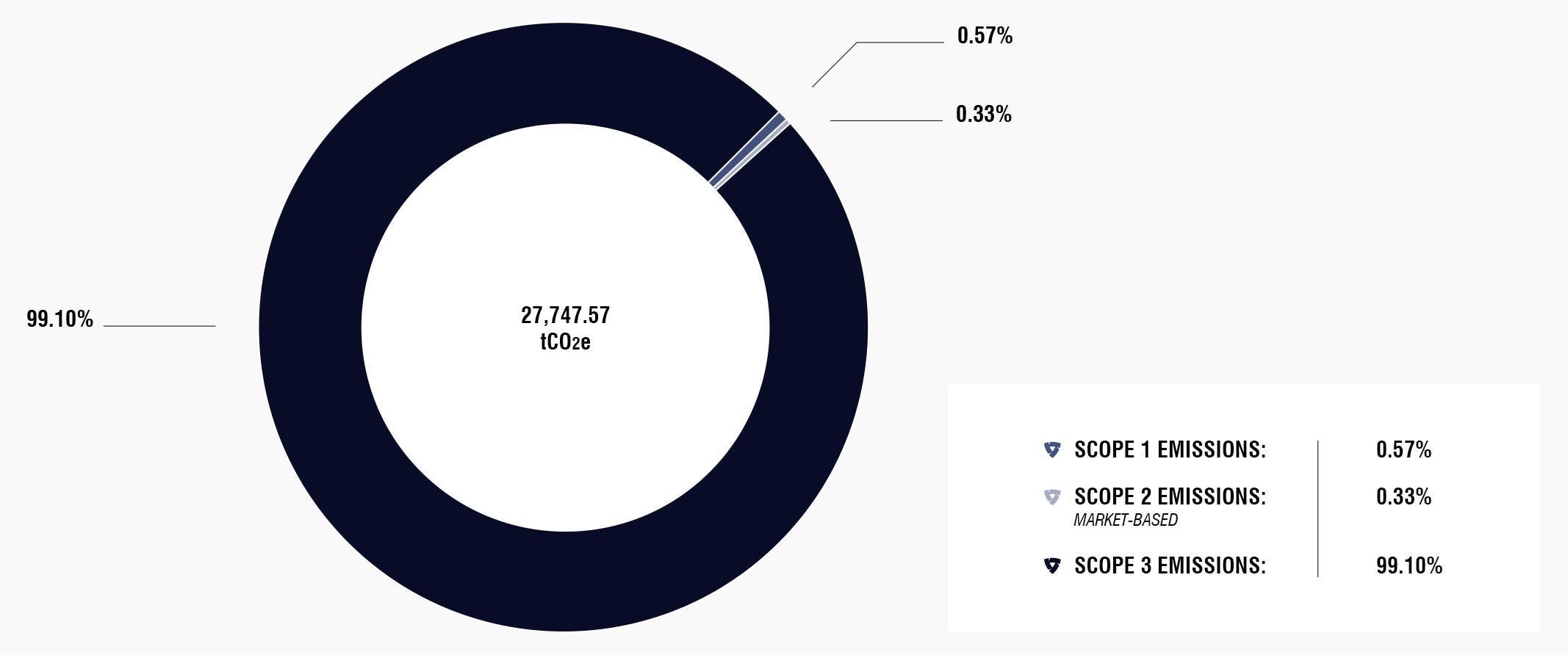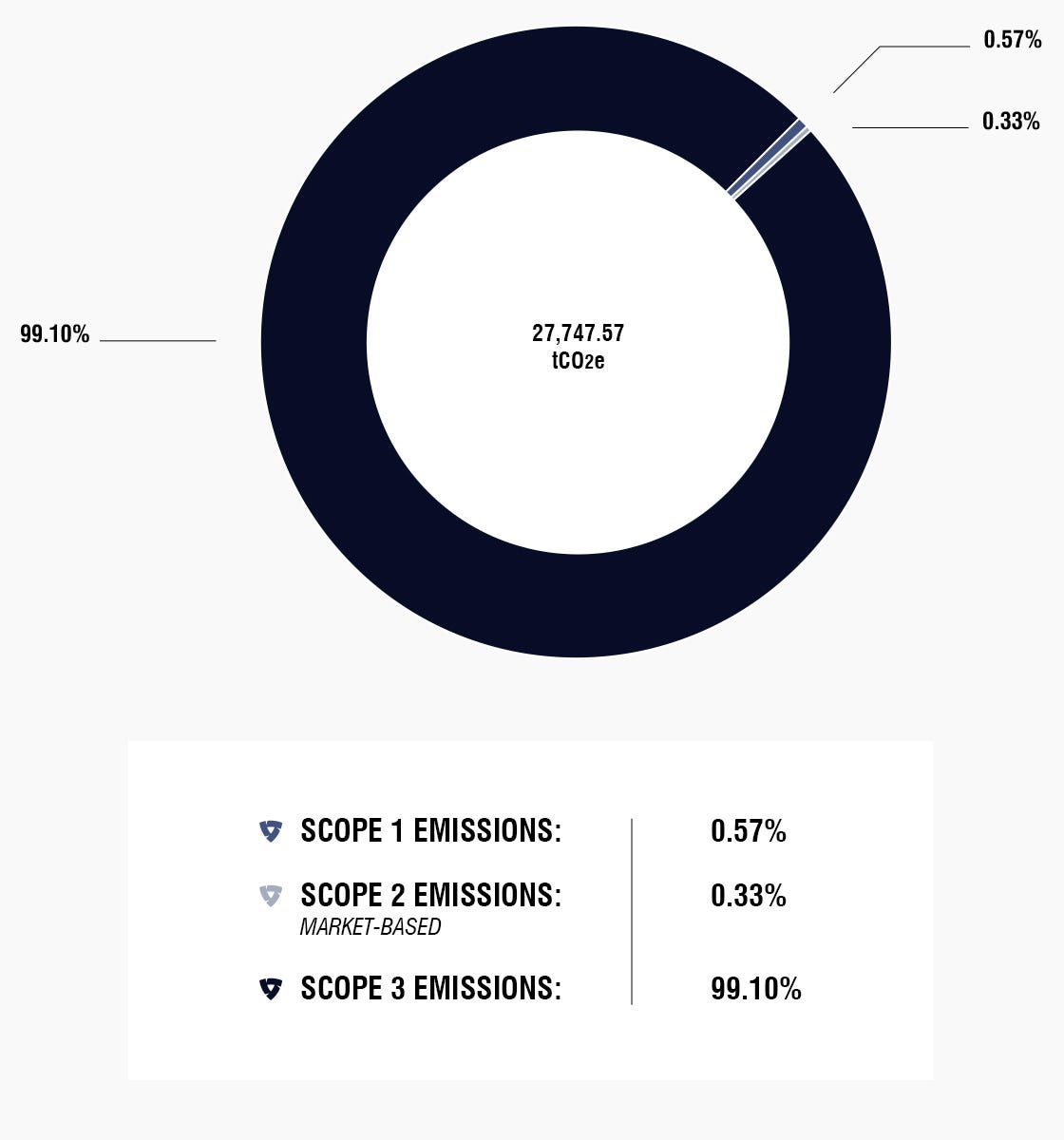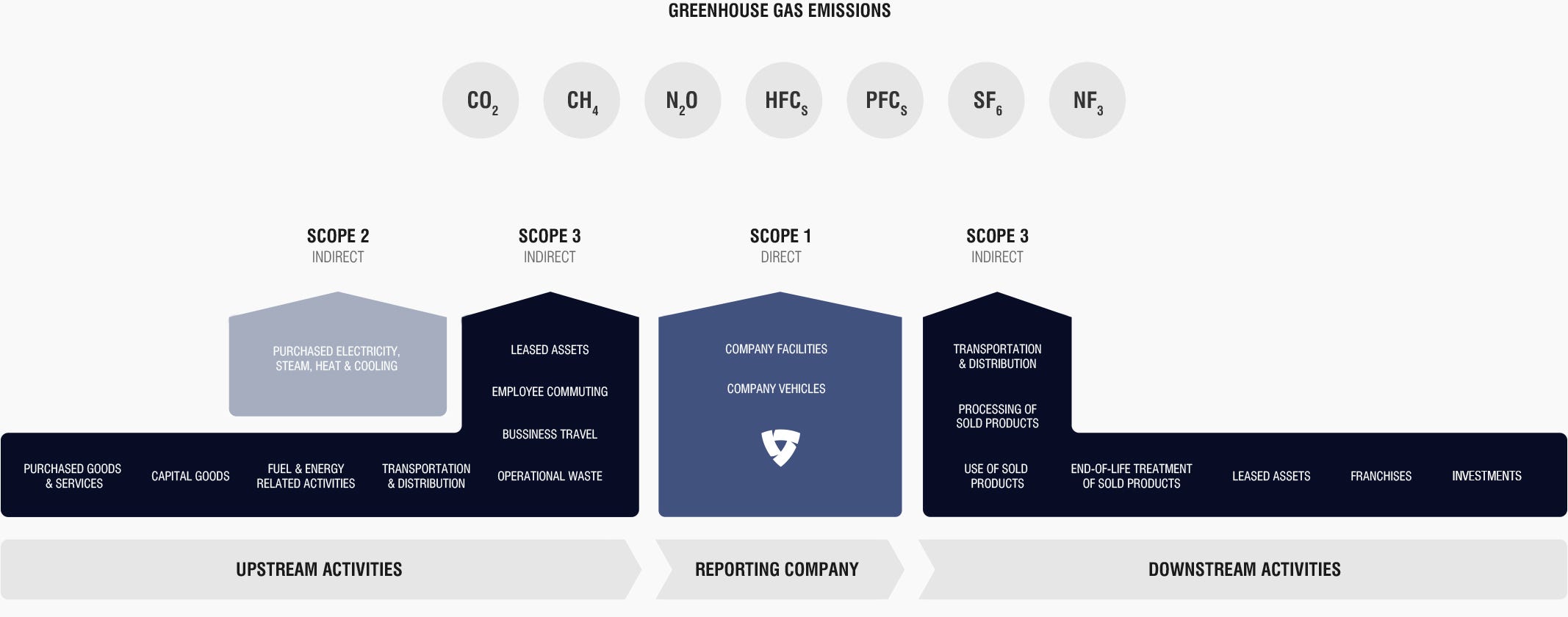As introduced in our sustainability stories, REV’IT! has launched various projects to create insight in and guidance for our sustainability journey and the topics that matter. The results from the Double Materiality Assessment show that climate-related issues are a hot topic for REV’IT!. The CSRD requirements demand REV’IT! to prepare a 1.5°C-aligned climate strategy and comprehensively report on greenhouse gas (GHG) emissions towards 2026.
Although there are currently no mandates requiring the sharing of calculations, we feel the responsibility to do better and be more transparent, and thus we decided to calculate and share the results regardless. Calculating the full organizational footprint gives us the data-driven starting point for our climate journey.
The accounting and reporting procedure used to quantify and report the GHG emissions is based on the ‘GHG Protocol Corporate Accounting and Reporting Standard – Revised Edition’ (GHG Protocol) and the complementary ‘Corporate Value Chain (Scope 3) Accounting and Reporting Standard’.
This standard was developed by the World Resource Institute and the World Business Council for Sustainable Development and is the leading standard for organizations to understand, quantify, disclose, and manage their GHG emissions.
Greenhouse gases trap heat radiation and this creates a comfortable blanket of heat around the globe. This helps to make planet earth habitable. However, nowadays the amount of greenhouse gases emitted to the atmosphere is far exceeding the necessary levels. This results in an increased greenhouse gas effect, which creates dangerous consequences.
Although there are multiple of those type of gases, each with its own ‘Global Warming Potential’ (GWP; indicates how severely the gas contributes to the greenhouse gas effect), it is easier to use the term “CO2 equivalent.” This term makes footprint calculations from different companies easier to compare.
For the CFA report, we use three different perspectives, i.e. Scopes: Scope 1, 2, and 3. These scopes differentiate the direct emissions and indirect emissions, each one sub-categorized by categories.
The results from our CFA are both based on primary data whenever the required data was available, and standardized data when the specific data required was not available. Because not all data is company specific. The total emissions from all three scopes equates to 27,747.57 tCO2e and our footprint is broken down as follows:


Conducting an initial CFA creates valuable insights into the company’s footprint. However, doing it once is not sufficient, because a corporate footprint is dynamic: it changes over time. A CFA, therefore, is an ongoing process, which we believe should be annually conducted, as a baseline target.
Apart from the iterative characteristics of the CFA, data availability is an important next step. While conducting the assessment, we learned what data is required for the CFA, and thus with every reoccurrence of the process, we now have a better view on the data we need and where we should get it.
Additionally, the data quality should improve where possible, to make the calculations more accurate. Very important variables for this are traceability and transparency, but also cooperation between REV’IT! and our stakeholders (i.e. suppliers, manufacturers).
To make data even more specific, we will make a start with a Life Cycle Analysis (LCA)or specific products. An LCA shows the product’s impact from raw material extraction to the end-of-life treatment of the product. This helps to feed very specific data to the data models for the CFA, but more importantly it enables REV’IT! to build a thorough understanding of the footprint of specific products.
By taking the information given, learning from it, and improving upon data gathering, we will have a clearer and more concise way of working our way into the future. We will also be better able to make more dramatic implementations once we see where it will make the most impact. Stay tuned for the following chapters of how it all unfolds.

 Nederland
Nederland  Italia
Italia  Deutschland
Deutschland  España
España  UK
UK  België (nl)
België (nl)  Belgique (fr)
Belgique (fr)  France
France  Sverige (en)
Sverige (en)  Danmark (en)
Danmark (en)  Österreich
Österreich  Portugal (en)
Portugal (en)  Polska (en)
Polska (en)  Other (en)
Other (en) 
